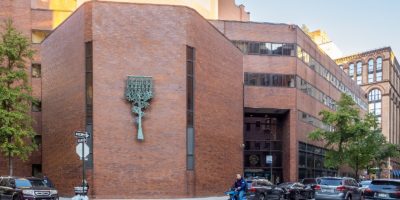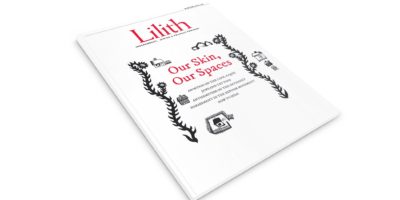
Outraged, but Not Surprised
This fall’s hot-off-the-presses report that there is rampant sexual abuse in the Reform Movement that has been covered up for decades should come as no surprise to anyone who has been paying attention. The #MeToo-inspired outing of former HUC professor Steven M. Cohen brought about testimonies of decades of abuse at HUC and across Reform institutions and communities. Cohen was hardly alone. Rabbi Sheldon Zimmerman was already grooming a teenage congregant in 1970, which the movement knew about and eventually suspended him for in 2000 without publicizing the reason (“Personal relationships” they called it at the time), though he continued to serve in multiple leadership roles for the next 17 years, including in Birthright, UJC, Jewish Renaissance and Renewal, and the Jewish Center in the Hamptons. The fact that sexual predators are all over the Reform movement is apparent to anyone who has dwelled within its institutions, especially those seeking leadership roles. Women rabbis, women cantors, and women rabbinical students, know these dynamics all too well—even those who choose to forget, ignore, or move on.
Nevertheless, as the first denomina- tional report about sexual abuse coming out of any of the Jewish denominations, this deserves credit. The Orthodox, Con- servative, and Reconstructionist move- ments have not done this, even though it is just as needed elsewhere. HUC gets credit for opening up, with what seems to be honesty and integrity, and employing an outside office to do the work. It’s very risky to show the ugly corners of one’s own house. Of course, they were under so much pressure from the flood of grass- roots stories that choosing not to do it may have been worse. Still, they did it. I hope others follow. Special credit to the women inside the movement who relent- lessly pushed for this, especially Rabbi Mary Zamore of the Women’s Rabbinic Network. They have my deepest respect.
I have been researching sexual abuse in the Jewish community for four years, interviewing dozens of victims/survivors as well as communal leaders and experts in the field. This report confirms many of my findings. Here are some key take-aways.
There are obviously far more than six abusers. Of the six predators named in the report, four are dead and theother two have already faced some consequences for actions—meaning, the institutions are safe in naming them. But there are many more out there. Some of the perpetrators named by my interviewees have also been outed publicly. I cannot help but wonder why some of them are not named in this report. Presumably it is out of fear of litigation. These six are clearly just the tip of the iceberg.
The culture of abuse starts at the top.
The significance of some of these names— like Zimmerman and Gottschalk—is that these are the people who were running the institutions for decades. We are talk- ing about big men with big power. This tells us that the culture came from the top, which would explain why victims often have such a hard time being heard, and are often afraid of their careers ending if they came forward. Many of my respon- dents described an entire apparatus dedi- cated to protecting abusers. The report makes reference to those dynamics as well. If the heads of the organization are abusers themselves, we can understand the system of protections for abusers.
It permeates the entire system— schools, shuls, community. Many of the testimonies were about rabbinical school. But they also reflected behaviors in synagogues, professional events, and communal settings. It is everywhere and beyond. The fact that Zimmerman was then moved to Birthright, another orga- nization where abuse is rampant and which is funded by a man who himself has been accused of decades of sexual abuse should give us an indication of how deep this culture goes.
And is bolstered by everyday sexism. I was very glad to see that the report dedicated the entire first section to the everyday sexism and patriarchy that scaffolds the culture of abuse. There were so many familiar examples—men com- plaining about women stealing men’s jobs, comments about women’s bodies, silencing women or calling women names like “high strung” or systematically interrupt- ing them, demeaning women by calling women rabbis “sacred prostitutes” or even just refusing to use women’s titles, (little factoid—until 2016, men’s ordi- nation certificates said “morenu harav”, or “our leader, the rabbi” while women’s certificates said only “rav u’morah,” “rabbi and teacher.”
not Orthodoxy. Until 2016!) So many stories. I am very grateful that the investigators fully acknowledged the connection between this kind of “gender abuse” and sexual abuse generally.
It isn’t rape; it’s still sexual abuse. The report is for the most part not about rape. It is about sexual abuse. And many of the stories—if not most—did not even involve touch. Comments, proposition- ing, verbal harassment, innuendo—there are many ways to make women feel small, powerless, and sexualized. But so often we hear, “nothing happened” because there was no physical contact. We hear this all the time. The excuse “It wasn’t rape” makes some people think that this is not a big deal. Let the record be clear: Sexual abuse can take place even with no physical contact. And it’s still traumatiz- ing and wrong.
It’s all denominations. Sexual abuse takes place across denominations. There is no shortage of stories of Orthodox rabbis who are abusers. (Follow Asher Lovy of Za’akah for nearly daily updates on this.) But leaders of each denomination like to blame the other ones for being where the
“real” problems lie. I’ve dwelled in enough denominational settings to hear how each one talks about the other. It’s endemic. Yet, sexual abuse happens everywhere, in all of them. Perhaps with some different dynam- ics—an Orthodox rabbi may groom his victims with words like “kedusha” and
“mitzvah” while a Reform rabbi might use words like “tikkun” or “mystical.” The underlying dynamics are the same, and no group is exempt.
But this one calls itself “progressive”. What is particular painful about reports of sexual abuse in the Reform movement is that this group positions itself as the one that is best for women. I mean, that is why I joined the movement. I was fully taken in by the idea that this is the only place in Jewish life where women thrive—women are rabbis, women count in minyan, women can be and do any- thing. Or so I thought. The issue here reflects a larger problem of sexual abuse by self-proclaimed feminists. It’s like the Eric Schneiderman problem—the man who, by day, was a savior of women, pros- ecuting men who choked women, and by night was a man who choked women. Jill Filipovic wrote a scathing analysis of this problem in the New York Times: “It hurts the most when it’s one of the “good” ones… [who appear to be] a feminist in the bright- ness of day but a violent misogynist when the lights went down.”
She argues that the problem is darker: That some men will use their “feminist-minded political work” to “ingratiate himself with the women he would go on to harm, and to cover up his cruelties.” What makes this so tormenting is that “even the men we thought we could trust—especially, perhaps, the ostenta- tiously good ones—may not be quite what they seem.” She also suggests that this position of playing the feminist gives abusers their power:
What greater sense of authority than knowing that you can rupture a woman’s confidence… and injure women and then scare them out of reporting it; and that you can also convince the feminist and progressive establishments to crown you one of their greatest leaders and strongest advocates? A man who derives satisfaction from riding in as a white knight fighting for women’s rights while he secretly abuses women: It’s so tremendously narcis- sistic it seems almost fictional.
I’ve been there.
On a personal note, many of the testimonies I read in the report were eerily familiar to me. I was only associated with HUC for two years before I took a “break”. I had very publicly moved over to the Reform movement to try and find a new, healthy, safe environment to recover from my Orthodoxy-inspired traumas and create a new pathway to Jewish life. But my experiences left me with all kinds of new Reform-inspired traumas that I did not see coming. It was both jarring and comforting to see some of my own experiences described by others and included in a report about sexual abuse and gender discrimination. As I was reading, I kept taking out a yellow highlighter to mark the lines from witnesses that I could have written myself (told she
‘was too high strung,’ to be a rabbi or ‘spoke too much’; was told that feminist scholarship was not welcome, or her sources were problematic because she did not use traditional male scholars, backlash for focusing on feminist issues, or in my case the profes- sor said, “I don’t want to hear that feminist stuff. It’s not legitimate, rigorous thinking”; not using women’s titles, such as “Dr.” not giving women rabbinical students the same opportunities that men were given; assuming women don’t know what men know; mocking women; dismissing women’s knowledge; telling women they don’t have the same “rabbinic voice” as men and I have to stop talking and just listen until I can find my “rabbinic voice”; responding to my academic commentary with a mocking, “She has to take a chill pill”. Yeah I guess maybe I do….)
I was really surprised at how much yellow highlighting my document has.
At the time I was experiencing all this, I was reluctant to label my experiences that way, because I was afraid of sounding like I have an agenda or like a broken record. Also, some of my greatest disappointments came from women who I had deeply admired who were so embedded in the patriarchal culture that they chose to ally themselves with sexist, patriarchal abusive practices—calling abusers “important allies”, rather than show some integrity and backbone. I have not really recovered from those painful realizations.
So I have mostly kept my experiences all to myself. But maybe now that this report has come out, I’ll find the courage to share publicly what I went through there. If I can stomach talking about it.
In the meantime, in my anthropological work, I have col- lected the stories about sexual abuse in the Jewish community, and my book, called “Rabbis who Abuse: Understanding the dynamics of high profile sexual abuse in the Jewish community,” is due out in early 2022. Maybe all this is a sign of change in the air. We can hope.
—Dr. Elana Sztokman, author, researcher, educator, and activist. Originally published on substack.



